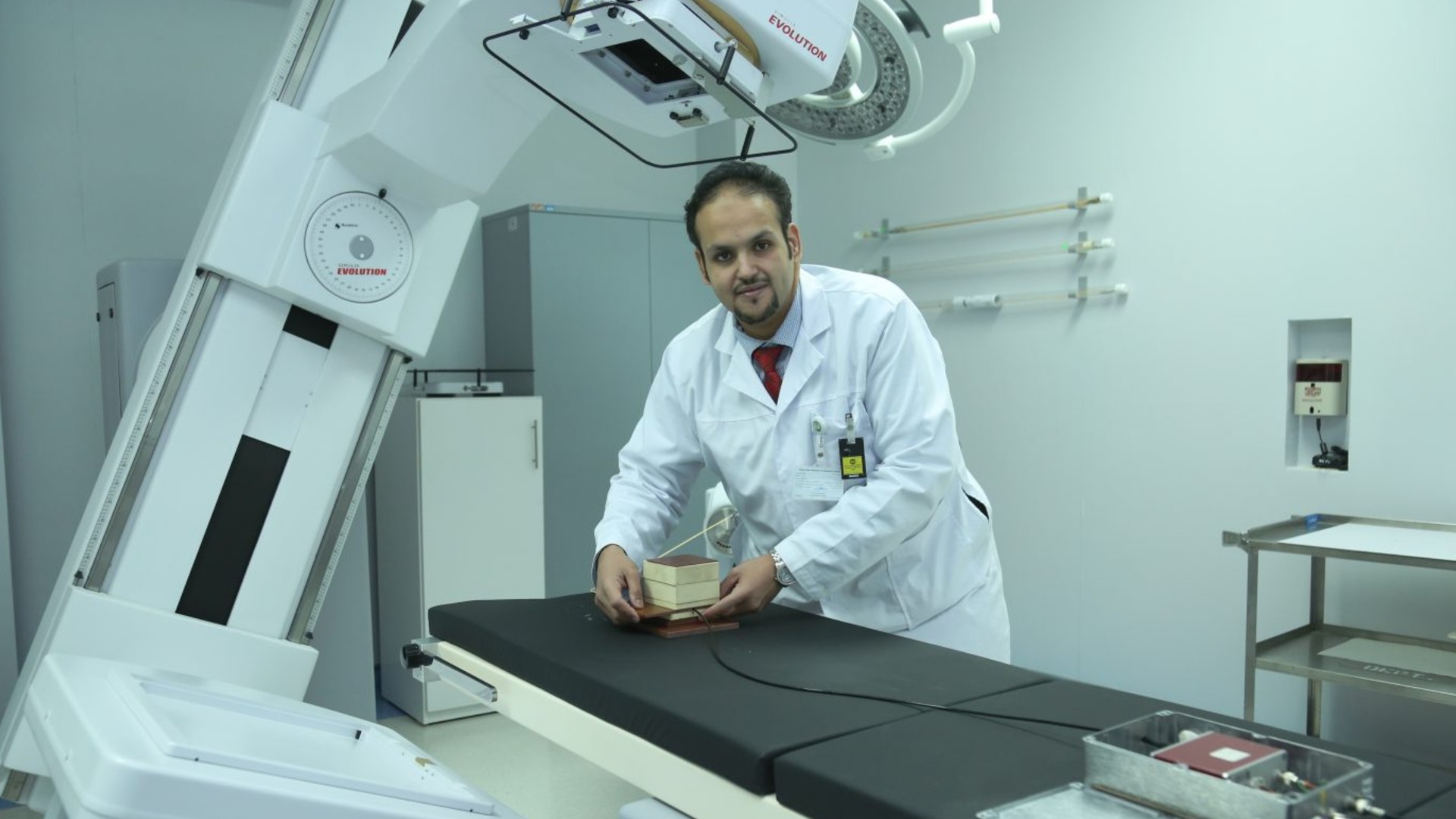January 28, 2020
Helping cure cancer
Improving the quality of life of cancer patients
Prostate and reproductive area cancers affect people of all ages and cultural backgrounds, and research from the University of Wollongong’s Centre of Medical Radiation Physics (CMRP) is helping with early detection and targeted radiation treatment.
CMRP’s PhD candidate Mohammed Al Towairqi, from Saudi Arabia, has developed an innovative method for radiation detection using fibre optic technology.
Mohammed’s interest for internal radiotherapy (brachytherapy) developed after studying physics at Taif University followed by a Masters in Medical Physics from Australia. The advanced radiotherapy technique is used mostly to treat prostate, gynaecological and breast cancers by implanting high dose rate radioactive seeds into an affected organ to destroy cancerous cells.
Following a short teaching stint, Mohammed turned his sights to a career in research with renowned medical radiation physicist and CMRP director, Distinguished Professor Anatoly Rosenfeld.
Professor Rosenfeld’s team – physician Joseph Bucci, medical physicist Dr Dean Cutajar, Associate Professor Marco Petasecca, Dr Jeremy Davies and Joel Poder – are considered leaders in their fields having delivered the world’s most advanced and cost-effective medical radiation sensor technology.
Professor Rosenfeld said Mohammed had “developed this innovative fibre-optic radiation detector probe from scratch.”
“It is quite different from those existing on the market previously, as the new probe utilizes an inorganic scintillator in contrast to a well-known probe which has a polymeric (“plastic”) scintillator,” he said.
“Mohammed’s device was built in-house from inexpensive components but allows an increase in the sensitivity of measuring and higher accuracy in source tracking, which translates into an improvement in the quality of life of cancer patients.”
Mohammed’s goal “is to destroy cancer-affected cells while carefully sparing other healthy tissues, by delivering the exact amount of radiation dose as clinically prescribed”.
“Once radioactive seeds are implanted into organs through needles and catheters, they need to be carefully tracked and accurately positioned into a specific location within the tumour to achieve the optimum outcomes in the prescribed treatment plan,” he said.
The technology under development at UOW will do away with conventional methods used for tracking tumours.
“I really like the nexus between theory and technology for developing effective medical treatments,” he said.
“The beauty of the new dose-measuring device is that it can be used as a real-time quality assurance tool (dosimeter and source localiser simultaneously) for prostate treatment in patients.
I’m grateful for electronic design and assembly support from Mr. Terry Braddock and Mr. Peter Ihnat for contributing to our innovative fibre dose measurement system.”
Mohammed said having such a small fibre-optic detector with a tiny sensor at the tip meant “we can track the entire treatment process and verify the HDR source location in real-time within a few millimetres without the need for pausing the fractionated treatment process.”
Mohammed recently applied the fibre dosimeter research in his home country and helped establish a mutually-beneficial collaboration between UOW’s CMRP and the King Faisal Specialist Hospital and Research Centre, which is considered the most prestigious hospital in Saudi Arabia.
“I had the opportunity to be involved in a collaborative research project as a medical physicist and research fellow at Saudi Arabia’s King Faisal Specialist Hospital and Research Centre (KFSHRC) under the supervision of Dr. Belal Moftah and Dr. Shada Wadi-Alramahi,” he said.
“I was involved in a variety of medical physics applications in radiation therapy, as well as conducting clinical research on developing an innovative fibre optic dosimetry system.”
The King Faisal hospital is considered a world-class institution facilitating state-of the-art technology for providing the best health care to patients.
“I undertook a research fellowship visit that was fully funded by the Saudi Arabian Cultural Mission (SACM) in Australia, and I spent almost four months investigating my developed radiation detector with the latest advanced radiotherapy techniques,” Mohammed said.
“For me, a PhD is just a degree and is a starting point for real-life research. My passion for helping people has no limits.”
Mohammed is on the International Medical Physics Certification Board (IMPCB) in Radiation Oncology Physics, where he can apply his academic and research experience solving clinical issues and translating innovative ideas into real clinical practice.
“This can assist in providing the best health care to cancer patients.”
“More recently, I was extremely privileged to be nominated for The King’s Award honouring inventors and talented youth, which is a huge honour at my age.”
Mohammed will graduate with his doctoral degree in 2020.
“I’m really looking forward to returning home to invest my learning by teaching and researching at the Department of Physic, Taif University.
“I am also privileged to be taking on a position as an associate research fellow at KFSHRC to help cure cancer not only within Saudi Arabia but also internationally”.
While Mohammed is looking forward to returning home, he is sad to leave UOW and is grateful to Australia and the university for hosting him over the last four years.
“I am deeply grateful to all the CMRP staff members especially Distinguished Professor Anatoly Rosenfeld, Professor Michael Lerch, Associate Professor Marco Petasecca, Dr. Dean Cutajar, and Dr. Enbang Li who guided me throughout my PhD journey.
“Many thanks also go out to the Saudi Arabian government for giving me the opportunity to study abroad, and to SACM in Australia and Taif University for providing me with financial support.”
